The Milan motorcycle show EICMA convincingly remains the most important place to show and to introduce new models in the industry. Sprawling across nearly a dozen buildings and 1.8 million square feet in the enormous Fiera Milano Convention Center, almost anyone who wants to be a player in the world's motorcycle, scooter and accessory market has a booth here—and "booth" hardly begins to describe some of the manufacturer displays, which may occupy 20,000 square feet and include 30-foot ceilings, multiple levels, numerous conference rooms, light shows or even bars.
So it's also a good place to get a gauge on the current state of the motorcycle industry: Recovering: BMW, Ducati and Triumph in particular are seeing growth in sales or market share, or both. KTM, after the darkness and devastation the recession inflicted on dirtbike sales, is seeing signs of light, and even the Japanese Big Four are feeling a little more adventuresome. The new product announcements also clearly demonstrate the stark differences emerging between the energized European motorcycle companies and the more circumspect Japanese. Take Honda, for instance. Announcing eight new production two-wheelers and two concept bikes, Honda Motor Company's President and Chief Executive Officer Takanobu Ito promised no more boring motorcycles. His company then showed, among other things: three new big-wheel scooters, the Mid Concept scooter/motorcycle hybrid with pink seat sides, a 1200cc V-Four Crosstourer "Adventure" prototype that must be pushing more than 600 pounds, the Crossrunner, essentially a VFR800 in adventure drag, and a CB1000R naked bike updated with a new-tri-color paint scheme and the world's ugliest LED front running light.
The contrast with Ducati and its Diavel couldn't be more stark. The Diavel wasn't the product of a marketing study, but came out of a small group of Ducati employees who make up its product planning group coming up with an answer to the question: What should we do next? The target wasn't a specific power cruiser, but instead a look and an attitude somewhere between a naked standard and existing machines such as the Harley-Davidson V-Rod. All agreed on the huge-tire look from the beginning, even as they also agreed the bike should be relatively light and must be capable of handling well. The result is a (claimed) 162-horsepower, 463-pound machine, with short cam timing, superb (claimed) midrange, and short gearing that helps the bike, according to Ducati Engineering head Claudio Dominicali, accelerate from a stop and brake harder than any other bike in their range—including the 1198R superbike. A claimed 100 pounds lighter and 30-some-horsepower stronger, it promises to lay waste to a V-Rod, not to mention Yamaha's massive VMax or even Suzuki's discontinued B-King.
Similarly, the K1600GT from BMW and the Tiger 800 adventure Triples from Triumph seem to illustrate a confidence and a flair for product design that has been recently missing from the Japanese builders. It may be as simple as the fact that motorcyclists are closer to the decision-making in the European companies, or it may be success begetting success, but the difference was striking as you strolled through the displays at Milan.
Other themes were noticeable as well. Stretched out, large-displacement scooters were prominent in many booths, with Honda introducing a new 600 and BMW showing a prototype, the C-Concept, that was more butch and techy looking than any other. The head of BMW motorcycles said such vehicles were popular in reaction to Europe's ever more crowded roads; perhaps, or perhaps it's simply scooter owners' wanting to grow closer to the power, acceleration and stability of a motorcycle without giving up the comfort and convenient storage, etc. of their traditional vehicle. In any case, it's hard to believe this trend will be more than a tiny niche in the U.S. market.
Another trend: Adventure tourers jumped the shark at this Milan show. As the owner of a Buell Ulysses, I say this with some sadness. But it was interesting to see a machine such as Moto Guzzi's new Stelvio adjacent to a large tech placard that enumerated its every specification—except its weight. Rather than pursuing lightweight Twins or Triples that could be comfortable at very fast highway cruises (128 mph is a minimal expectation in Germany) and still be useful in off-road situations, manufacturers have decided that adventure touring is just an excuse to build bloated touring machines with upright, comfortable, dirt-bike riding positions—and hold the off-road capabilities, please. Honda is at least honest about this, describing its new VFR800-based Crossrunner as having "... the upright riding position and rugged appearance of an adventure bike." Not unlike a soccer mom's SUV, the appeal is in the riding position and the look. And the accessory companies can supply the gear nut with enough skid plates, LED running lights, brush guards and fabricated luggage, etc. to make their chosen machine look ever more like a proper Paris-Dakar competition machine—even if it sees no more off-road use than your average Manhattan Range Rover. Similarly, the myriad of motorcycle clothing companies exhibiting at Milan, each seemed to have a "desert" two-piece textile suit in their range, notable for its light color and multiple front pockets layered one atop the other—absolutely essential for the commute into work each morning.
But the most overwhelming impression of Milan: passionate, creative people make up the motorcycle industry, and that passion can be seen over and over again in the motorcycles and parts for them that they create.












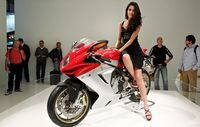
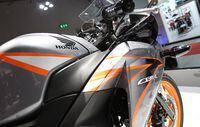
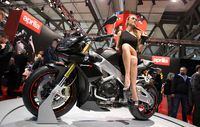

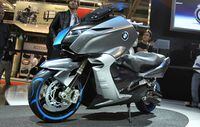


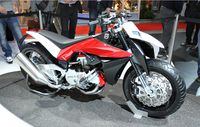
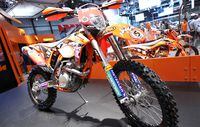
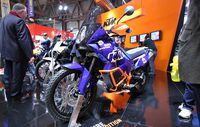
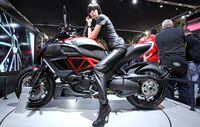


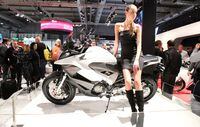

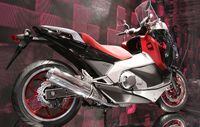
/cloudfront-us-east-1.images.arcpublishing.com/octane/QSS5DZ6SKJEU3AKE4KDAWYBEFY.jpg)
/cloudfront-us-east-1.images.arcpublishing.com/octane/SMCEQCLWRVEFTJJES6TAHB3OOQ.jpg)
/cloudfront-us-east-1.images.arcpublishing.com/octane/JCACIDCAC5FUNPTXO2BOUHGGII.jpg)
/cloudfront-us-east-1.images.arcpublishing.com/octane/DC7ZGILA2BCJXHZIUNYGV7JSEA.jpg)
/cloudfront-us-east-1.images.arcpublishing.com/octane/EWJEZUGWEZGABDEQWB64WL46GQ.jpg)
/cloudfront-us-east-1.images.arcpublishing.com/octane/5NHBMRMSFVD5JAPFNMBMNPGXQE.jpg)
/cloudfront-us-east-1.images.arcpublishing.com/octane/WHE43SCPLJBRNANAJAGXHOAIEU.jpg)
/cloudfront-us-east-1.images.arcpublishing.com/octane/6R56AQAW6NDE7BBIJ3SMCOOY5A.jpg)
/cloudfront-us-east-1.images.arcpublishing.com/octane/JMQTUE2FKZFURJTJXDMM4V47AQ.jpg)
/cloudfront-us-east-1.images.arcpublishing.com/octane/P2QYJDMQNVEANMQFXHNB3OVFKQ.jpg)
/cloudfront-us-east-1.images.arcpublishing.com/octane/VNKGXM4AA5BPRGERJOPV6GADAQ.jpg)
/cloudfront-us-east-1.images.arcpublishing.com/octane/2WS4YIFLTNG25L25WP7ZFLSWJM.jpg)
/cloudfront-us-east-1.images.arcpublishing.com/octane/UXRS6ZVQZFC23FY2EDYNT5WMVA.jpg)
/cloudfront-us-east-1.images.arcpublishing.com/octane/7JETMCKNVRGDZIGB3JCITGLPUU.jpg)
/cloudfront-us-east-1.images.arcpublishing.com/octane/OZV6E2KNIJDVHGOKXQQ2AHKLHQ.jpg)
/cloudfront-us-east-1.images.arcpublishing.com/octane/XSKMIBFZIZDN7JC6P7SMNMD3QA.jpg)
/cloudfront-us-east-1.images.arcpublishing.com/octane/ITVHWHVQ75BQBHACERYDJLPLHE.jpg)
/cloudfront-us-east-1.images.arcpublishing.com/octane/M3QRBSQ4VFEVPKYTTM3OETVFBU.jpg)
/cloudfront-us-east-1.images.arcpublishing.com/octane/H3EMT5NJ5BDZPBBH27SW3ADQH4.jpg)
/cloudfront-us-east-1.images.arcpublishing.com/octane/XTROSHDZFJB5DIJYU2VF2REFIU.jpg)
/cloudfront-us-east-1.images.arcpublishing.com/octane/7EUSM4GQEBEFTPAYZ6MOMKMMUQ.jpg)
/cloudfront-us-east-1.images.arcpublishing.com/octane/ZN44KZLHD5CHVIY3WZYAGTPGSI.jpg)
/cloudfront-us-east-1.images.arcpublishing.com/octane/5A776WXBY5GAPDYFTTUEUZNIJA.jpg)
/cloudfront-us-east-1.images.arcpublishing.com/octane/NCYHFQ2S3BAT7EC7VDN2ONGRTU.jpg)